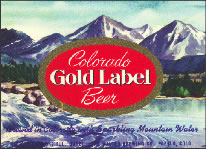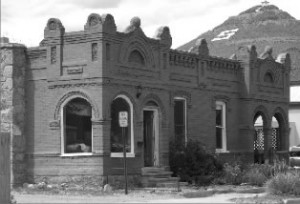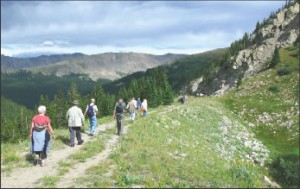by Ron McLarty
Published in 2008 by Penguin Books Ltd.
ISBN: 978-0-670-01895-6
367 pp.
Reviewed by Marcia Darnell
What do you get when you add a New York writer to the San Luis Valley?
“Art in America.”
Veteran character actor Ron McLarty has built a successful second career as a writer. Creede Repertory Theatre is considering producing one of his plays, and his novels have garnered a lot of attention. “Art in America,” his third book, is largely set in the San Luis Valley, within the fictional village of Creedemore, based on Creede.
The protagonist Steven Kearney, is a failed writer, having had nothing published or staged – ever – when he wins a summer residency in Creedemore. Hired to write and direct a play about the history of the small town, he finds himself embroiled in controversies large and small. There’s a trial commencing regarding water and land rights, which has drawn journalists, activists both liberal and conservative, and all the inhabitants of Creedemore into a swirling maelstrom.
There are also the usual small-town feuds, family dramas, and, of course, a love story. The mix is further complicated by a terrorist plot, a narcissistic cowboy poet and the arrival of Steven’s friends from New York, a lesbian artist and a mob-connected thug. Steven’s pervading self-doubt adds mystery to whether the play will be finished or staged.
McLarty does well by the San Luis Valley in his descriptions of beautiful land and colorful characters. His knowledge of local history seems thorough as well. (One local debate is whether Kit Carson was a hero or a scumbag.)
The responsibility of art and artists is explored in this novel, where visual and spoken art intersect. Steven calls his play a “word mural,” and his love interest is the painter who creates the backdrop for his production. The question of what art is seems to be its impact on those who view it. Their reaction, in turn, is what makes an artist.
Given the vibrancy of the setting and the characters, “Art in America” is disappointingly slow. The language drags in places and the book is overpacked with subplots. Truly, the novel should be about 25 percent shorter.
“Art in America” is a worthwhile read, but not a quick one.
The pace doesn’t really pick up until the last section, when the play is being enacted. Things really fly then, with the novel’s disparate story lines coalescing into a scene both hilarious and profound.
“Art in America” is an adventure for anyone interested in art, small towns, or Colorado history. Just don’t expect to polish it off in an evening.



